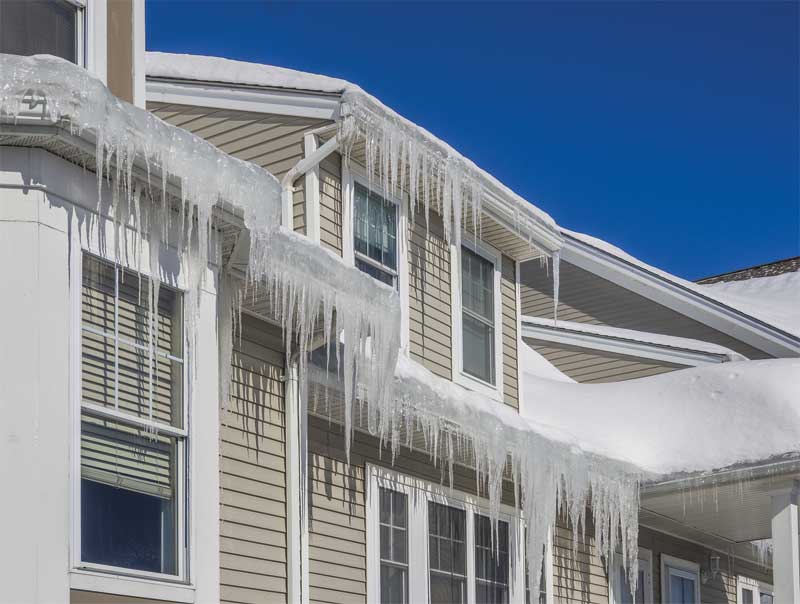Membrane roof systems serving as air barriers

Code requirements
Air leakage has been a concern in the construction industry for many years. It can affect indoor air quality (IAQ), energy efficiency, and occupant comfort, as well as contribute to moisture and condensation damage of the building envelope. Therefore, energy codes have added air barrier-related provisions to address air leakage concerns.
Air barrier requirements can be found in the 2011 and 2015 editions of the National Energy Code of Canada for Buildings (NECB). This article explores the most recent edition—specifically, the ‘prescriptive path’—to show compliance and commercial building requirements for new construction.
For the 2015 edition of NECB, the prescriptive air barrier requirements are in section 3.2.4, Air Leakage, under Division B-Acceptable Solutions, Part 3-Building Envelope. This section is as follows:
3.2.4. Air Leakage
3.2.4.1. General
1) The building envelope shall be designed and constructed with a continuous air barrier system comprised of air barrier assemblies to control air leakage into and out of the conditioned space.
3.2.4.2. Opaque Building Assemblies
1) All opaque building assemblies that act as environmental separators shall include an air barrier assembly conforming to Sentence (2) or (3).
2) Except as provided in Sentence (3), air barrier assemblies shall
a) conform to CAN/ULC-S742, “Air Barrier Assemblies – Specification,” and
b) have an air leakage rate no greater than 0.2 L/(s·m2) at a pressure differential of 75 Pa.
(See Note A-3.2.4.2.(2) and (3).)
3) Air barrier assemblies are permitted to be tested in accordance with ASTM E 2357, “Determining Air Leakage of Air Barrier Assemblies,” to meet the air leakage requirement stated in Sentence (2), provided
a) the building is erected in an area where the 1-in-50 hourly wind pressures do not exceed 0.65 kPa, and
b) the air barrier assembly is installed on the warm side of the thermal insulation of the opaque building assembly.
(See Note A-3.2.4.2.(2) and (3).)
In short, NECB offers two options to show compliance—air barrier assemblies shall conform to CAN/ULC-S742 or be tested per ASTM E2357. CAN/ULC-S742 is a specification and addresses air barrier assemblies (i.e. the combination of air barrier materials and their accessories). It also indicates how to measure air leakage of air barrier materials and assemblies, and performance requirements.
ASTM E2357 is a test method and describes the procedure to be followed to measure air leakage rates of air barrier materials and assemblies. Based upon the results of the measurements, the procedure then assigns an air leakage rating for the air barrier assembly.
At the same time, it is important to verify which energy code has been adopted. Jurisdictions do not necessarily adopt the latest issued codes. It is also critical to keep in mind jurisdictions may add or delete portions of the code or have local amendments.


